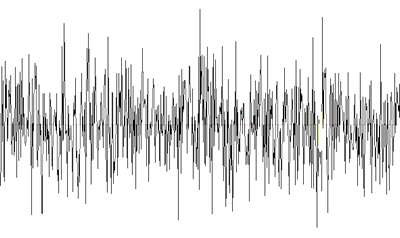|
The Noise from unwanted sounds can be
very irritating to people. The Physical Science field of
Acoustics devotes much of its studies to ways to reduce
the noise from unwanted sounds. Methods include reducing
the noise from the source, using sound absorbing
acoustical materials and masking the sounds. One other
method is Active Noise Cancellation, explained in the
next lesson.
Questions you may have about noise are:
Reducing noise at source
The first line of defense against
excessive noise is to reduce or stop the noise at its
source.
Gasoline engines can be very noisy due
to the combustion or explosion of the fuel. Automobiles
and most other machine that use gasoline engines are
equipped with mufflers that greatly reduce the noise
from the source. The sound muffler is a container in the
exhaust pipe that uses a clever set of baffles to stop
the engine noise.
For some reason there are gasoline
engines used that have no mufflers or a minimal muffler.
Harley-Davidson motorcycles have been allowed to make
extra noise, allowing the riders to get some sort of
thrill. Gasoline leaf blowers also seldom are muffled.
You will see the operator wearing ear protectors.
Unfortunately, people in the surrounding area must
suffer from the noise.
In recent years, airliners have been
produced with reduced-noise jet engines. This noise
reduction at the source has been welcome by people
living near airports.
Noise from dogs that bark all night,
apartment neighbors who play their sound systems on high
volume, and similar sources of noise by inconsiderate
people can sometimes be reduced at the source by
complaining to the police, apartment manager or other
authority. It is no guarantee that the noise will stop
though.
Sound absorbing materials
You can reduce the noise entering your
house, apartment or room by using sound absorbing
materials. This can also reduce internal noise from
echoes off the walls.
Walls do a fairly good job of reflecting
and absorbing much sound. Unfortunately, low frequency
sounds such as bass tones readily travel through solid
walls. Thus, you may not hear the neighbor's music, but
you can hear a loud boom-boom-boom from the bass notes
of the music.
Windows offer little filtering of
outside sounds. Drapes over the windows can help a
little.
Acoustical tiles on the walls and
ceiling of a room can absorb much of the outside sounds,
as well as eliminate echoes from sounds inside the room.
Masking sounds
Although you can try to reduce external
noise by various methods, you may never get a room quiet
enough to be able to sleep or study in peace. One
alternative is to create a random extra noise that will
block the unpleasant sounds that may be irritating you.
One method is to use white noise, which
is a random noise similar to static. There are white
noise generators available to help mask unwanted noise.

White noise signal is a random mixture
of sound frequencies and amplitudes
Another method is to use a CD that
provides soothing sounds, such as water running, ocean
waves, or nature scenes. These also can be purchased.
They seem to be effective for people bothered by
external noises.
The sound of noise can be very
irritating to people. Acoustics devotes much of its
studies to ways to reduce the noise from unwanted
sounds. Methods include reducing the noise from the
source, using sound absorbing acoustical materials and
masking the sounds. |